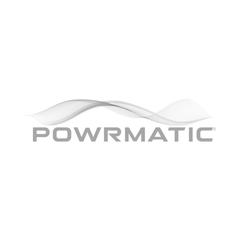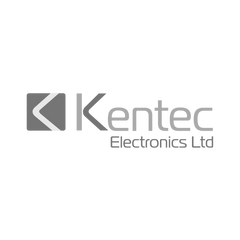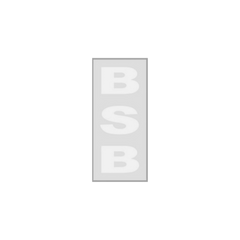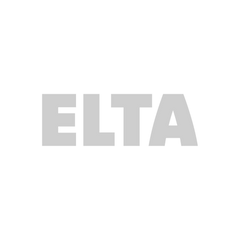Shop All
Elta Single Room Heat Recovery DEXA HR Plus+
From £380.47 excl. VATUnit price excl. VAT /Unavailable- £116.13 excl. VATUnit price excl. VAT /Unavailable
Brands
Find out more about Decentralised Fans
General Info
General Info
Decentralised ventilation provides zone-based solutions ideal for retrofit, apartments, and small commercial rooms where risers or large duct routes are constrained. Units operate independently so airflow can match room use and occupancy. Modern single-room heat-recovery devices (SRHRV) recover heat from extract air and temper the supply, improving energy performance; dMEV provides continuous local extract in wet rooms. Wall-through or ceiling-mounted formats offer installation flexibility.
Compliance focuses on achieving the ventilation rates in Approved Document F and supporting energy outcomes under Approved Document L. Performance is demonstrated using the relevant parts of the BS EN 13141 series (e.g. 13141-6 for local extract fans, 13141-8 for non-ducted single-room supply/extract with or without heat recovery). BS EN ISO 5801 aerodynamic fan testing may supplement product data, where applicable. For smoke control applications, only EN 12101-3-certified smoke extract fans are suitable; standard decentralised units are not for smoke extract.
Ecodesign requirements (for ventilation units placed on the GB/EU market) and manufacturer data typically include EC motors, variable-speed control, and optional CO₂/humidity/PIR sensors to enable demand control. Commissioning should confirm design airflow setpoints, correct sensor/boost operation, electrical safety (BS 7671; Part P in dwellings), and acceptable noise. Where penetrations cross fire-resisting elements, provide fire-stopping in line with Approved Document B and the tested details. Maintenance includes filter replacement (if fitted), heat-exchanger cleaning for SRHRV, and updating O&M with settings and measurements to support future servicing.
Decentralised systems therefore offer a flexible, scalable approach that can meet regulatory ventilation requirements, support energy performance, and improve occupant comfort without the space and coordination demands of central ductwork.
Purpose of Decentralised Fans:
Decentralised fans, such as dMEV (decentralised mechanical extract ventilation) and single-room MVHR units, are designed to provide ventilation at a room-by-room level without the need for extensive ductwork or central riser shafts. Their primary purpose is to deliver the airflow rates required by Approved Document F (Ventilation), ensuring adequate removal of moisture, odours, and indoor pollutants. In retrofit projects, apartments, or buildings with limited ceiling voids or plant space, decentralised systems offer a practical alternative to centralised mechanical ventilation. Where heat recovery is included, these fans also reduce heat loss by transferring warmth from extract air to incoming supply air, supporting compliance with Approved Document L (Conservation of Fuel and Power).
Benefits of Decentralised Fans:
The benefits of decentralised fans lie in their flexibility, energy efficiency, and simplicity. Because each unit operates independently, they can be tailored to the specific needs of individual rooms, improving both indoor air quality and occupant comfort. Installation is straightforward, with wall-through or ceiling-mounted options, making them especially attractive for refurbishment projects where ductwork is impractical. Modern units incorporate Ecodesign-compliant motors, demand-controlled sensors (humidity, CO₂, PIR), and variable-speed operation, which reduce energy use while maintaining good air quality. For landlords, housing providers, and designers, decentralised fans provide a cost-effective way to meet regulatory standards, protect building fabric from condensation and damp, and enhance occupant wellbeing.
How decentralised fans help with mould reduction and Awaab’s Law:
Decentralised fans work by providing a continuous and reliable flow of fresh air directly into or out of individual rooms, which helps to control excess humidity and remove moisture at source. By keeping indoor relative humidity at safe levels, the system reduces the risk of condensation forming on cold surfaces, which is the primary cause of mould growth. This proactive approach to moisture management supports landlords and housing providers in complying with the requirements of Awaab’s Law, which places a duty on social housing landlords to take prompt and effective action to prevent damp and mould hazards in tenants’ homes. Properly designed and maintained decentralised ventilation systems therefore play a direct role in safeguarding resident health while ensuring legal and regulatory compliance.
Fire compartmentation considerations:
When installing decentralised fans, installers must take care if the unit or associated ducting penetrates a fire-resisting wall, floor, or ceiling. Any penetration through a compartment line, protected escape route, or other fire-resisting element can compromise the building’s fire strategy if not properly treated. In such cases, installers should seek confirmation from the project’s fire engineer, building control officer, or principal designer on whether the construction forms part of a fire compartment or barrier. Where penetrations are unavoidable, they must be fire-stopped using tested systems and methods in accordance with the manufacturer’s guidance and the requirements of Approved Document B. This ensures that compartmentation performance is maintained and compliance with Building Regulations is not undermined.
Frequently Asked Questions
What are the main advantages of decentralised fans?
What are the main advantages of decentralised fans?
They provide energy-efficient, demand-controlled ventilation without the need for large risers or ductwork. They improve indoor air quality, are easy to install in individual rooms, and offer flexibility for both retrofit and new-build projects.
Can decentralised fans be used in existing buildings?
Can decentralised fans be used in existing buildings?
Yes. Their wall-through or ceiling-mounted designs make them ideal for retrofit projects, avoiding the need for complex duct routes.
Fire compartmentation considerations
When installing decentralised fans, installers must take care if the unit or associated ducting penetrates a fire-resisting wall, floor, or ceiling. Any penetration through a compartment line, protected escape route, or other fire-resisting element can compromise the building’s fire strategy if not properly treated. In such cases, installers should seek confirmation from the project’s fire engineer, building control officer, or principal designer on whether the construction forms part of a fire compartment or barrier. Where penetrations are unavoidable, they must be fire-stopped using tested systems and methods in accordance with the manufacturer’s guidance and the requirements of Approved Document B. This ensures that compartmentation performance is maintained and compliance with Building Regulations is not undermined.
Are there low-noise decentralised fans?
Are there low-noise decentralised fans?
Yes. Many models are specifically designed for noise-sensitive applications, and selecting products with low dB(A) ratings ensures quiet operation.
What maintenance is required?
What maintenance is required?
Maintenance typically involves replacing or cleaning filters (if fitted) and periodic cleaning of grilles or heat exchangers. Modern EC motors are sealed and do not require lubrication.
What should engineers verify about safe isolation?
What should engineers verify about safe isolation?
Each fan must have a local, lockable isolator installed in accordance with BS 7671 (IET Wiring Regulations), located in a safe and accessible position. In dwellings, Part P (Electrical Safety) also applies.
How should O&M documentation be handled?
How should O&M documentation be handled?
Contractors should compile manufacturer manuals, wiring diagrams, airflow test results, and commissioning data. Any site-specific settings (speed, control setpoints) should also be recorded for handover.
What standards apply to commissioning?
What standards apply to commissioning?
Commissioning should follow the manufacturer’s instructions and verify compliance with Approved Document F (ventilation rates) and Approved Document L (energy performance). Airflow should be measured to confirm design values.
Can decentralised fans be used for smoke extract?
Can decentralised fans be used for smoke extract?
No. Standard decentralised fans are not tested to EN 12101-3 and must not be specified for smoke control applications. Only certified smoke extract fans are suitable.
What performance checks should be carried out at commissioning?
What performance checks should be carried out at commissioning?
Checks should confirm airflow delivery in line with Approved Document F, correct operation of sensors or boost controls, and acceptable acoustic performance.
What site constraints affect installation?
What site constraints affect installation?
Limited void space, structural fixing points, and noise-sensitive locations may restrict placement. Fans should be mounted with appropriate sealing and vibration isolation.
Fire compartmentation considerations
When installing decentralised fans, installers must take care if the unit or associated ducting penetrates a fire-resisting wall, floor, or ceiling. Any penetration through a compartment line, protected escape route, or other fire-resisting element can compromise the building’s fire strategy if not properly treated. In such cases, installers should seek confirmation from the project’s fire engineer, building control officer, or principal designer on whether the construction forms part of a fire compartment or barrier. Where penetrations are unavoidable, they must be fire-stopped using tested systems and methods in accordance with the manufacturer’s guidance and the requirements of Approved Document B. This ensures that compartmentation performance is maintained and compliance with Building Regulations is not undermined.
How can noise issues be resolved?
How can noise issues be resolved?
Ensure duct connections are sealed, fan speeds are correctly set, and any acoustic elements are properly installed. In sensitive cases, additional duct lining or attenuators may be required.
How should filter resistance be managed?
How should filter resistance be managed?
Fans must be sized to allow for increased resistance as filters load. Maintenance schedules should include filter inspections and timely replacements to maintain efficiency.















